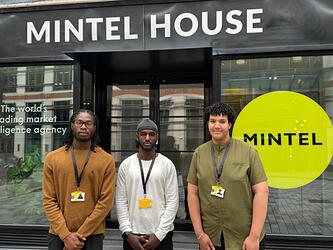The story behind the stories
Andy Kahl, Evidon
A lot of things happen when you decide to visit a website. Your browser needs to make a call to a web server to request the web page, which is then transferred to your machine and rendered on screen. This all happens in a matter of seconds. But that’s just a fraction of the activity that occurs; the visible bit. Hidden away behind the scenes, a whole host of software tags and scripts are firing off and running; collecting and reporting information to build up a profile of who you are, where you’ve been and what your interests are.
This type of data is hugely valuable for editors and publishers, helping them to understand their audience.
Most people are unaware of this invisible web of activity – but Andy Kahl sees it. He’s the director of data analysis for Evidon, a company whose stated goal is to “reveal the invisible web”. Four years ago, Evidon bought a piece of software called Ghostery, a browser plugin that flags all the tracking scripts running on any given webpage. Twenty million people use Ghostery, says Kahl, and 10 million of those people agree to share data on the scripts they bump into to help Evidon keep track of the trackers.
Exponential growth
The number of unique tracking technologies encountered by Ghostery users rose from 645 in the first quarter of 2012 to 987 by the end of the fourth quarter. That’s an increase of 53% – and growth shows little sign of slowing down, says Kahl.
The data collected from Ghostery allows Evidon to compile tracker maps, like the one pictured below:
This is a node graph, taken from a live scan of HuffingtonPost.com. The small orange and red nodes are
analytics software and media measurement trackers – in this case Google Analytics, ComScore’s ScoreCard Research Beacon, Nielsen’s NetRatings SiteCensus, and Omniture. In amongst this, there’s also Adobe’s Test & Target software, which allows for the AB testing of headlines that Huffington Post CEO Jimmy Maymann refers to in an interview here.
Nodes are sized according to prevalence – and the most prevalent tracker on HuffPost is Advertising.com. Like HuffPost, Advertising.com is owned by AOL, and its job is to match ad buyers with ad inventory on AOL-owned sites. So, as you’ll see from the map, Advertising.com is putting out calls to ad servers and exchanges such as Yahoo’s Right Media and Google’s DoubleClick.
Leaked information
Of the 27 tracking technologies present on the HuffPost site, only 13 are called by the site itself, or its subdomain, s.huffpost.com. Thus, ‘data leakage’ should be a prime publisher concern, says Kahl. Website owners are frequently in the dark about how much tracking is actually going on – and if they don’t know what’s happening, it’s very difficult for them to keep control of their audience data.
Kahl stresses that having a wide array of trackers is not necessarily a bad thing – a publisher with a lot of low-cost ad inventory to fill might want to partner with as many ad servers as possible. Rather, his view is that the number and type of trackers a site has should be rooted in a strategy for what the publisher wants to achieve.
- First published in Impact Magazine, Issue 4 Jan 2014

We hope you enjoyed this article.
Research Live is published by MRS.
The Market Research Society (MRS) exists to promote and protect the research sector, showcasing how research delivers impact for businesses and government.
Members of MRS enjoy many benefits including tailoured policy guidance, discounts on training and conferences, and access to member-only content.
For example, there's an archive of winning case studies from over a decade of MRS Awards.
Find out more about the benefits of joining MRS here.











0 Comments